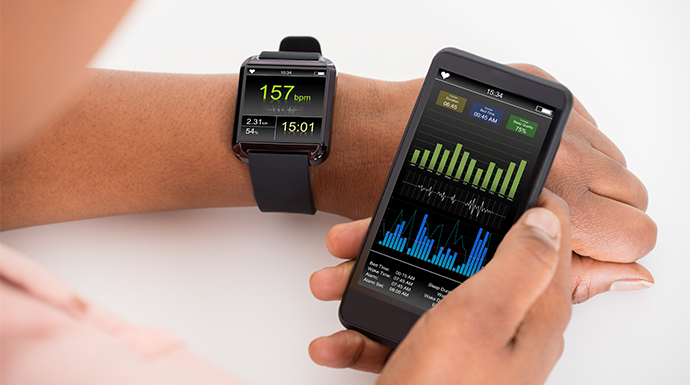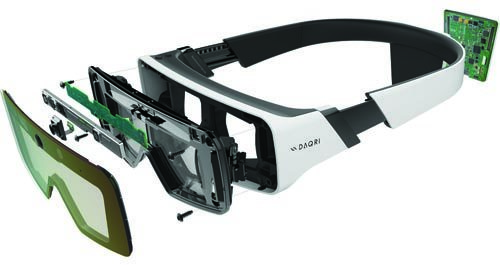Role of Wearables in Occupational Health and Safety
Wearables in Occupational Health and Safety
Table of contents
Introduction
Wearable technology has made significant strides in recent years and has various applications that can benefit workers' occupational health and safety. Wearables such as smartwatches, fitness trackers, and other wearable devices can monitor workers' health and safety in real-time, allowing for rapid response to emergencies. The potential applications of wearable technology in occupational health and safety are many, ranging from environmental monitoring to injury prevention to personal protective equipment (PPE) compliance. Wearables can help companies take a proactive approach to workplace safety and worker well-being, identify potential hazards, and reduce the risk of injuries and illnesses.
Crucial roles wearables play
Here are some ways that wearables can play a crucial role in encouraging occupational health and safety in the workplace:
Situational awareness enhancement
Wearables can help provide workers with real-time information about their environment, including heat stress, noise levels, and air quality (e.g., underground miners). They can also keep track of workers' movements, alerting them to potential hazards in their environment.
Physiological and Mental health status monitoring

The wearables can keep track of vital signs such as heart rate, skin temperature, and blood pressure, which can alert workers to potential health risks such as dehydration, heatstroke, or fatigue. They can also detect warning signs of mental health problems and provide companies with timely alerts to step in as quickly as necessary.
Encouraging safety compliance and Providing Emergency Response
The wearables can monitor safety compliance issues like the proper use of personal protective equipment (PPE) by workers and alert managers when such protocols are not being followed. In cases of an emergency, wearables reduce response times by providing location information and biometric data, allowing emergency responders to quickly assess the situation and take appropriate action.
Real-Time Analytics and Insights
Wearables can provide real-time data analytics and predictive insights, revealing patterns of behaviour that could lead to potential danger and allowing companies to grind in with preventive measures.
There are several benefits to using wearables for occupational health and safety. Among these benefits are improved health and safety outcomes for workers, reduced costs related to work-related illness and injury, and increased productivity due to improved safety compliance.
On the other hand, significant data privacy concerns are associated with the use of wearables, particularly when the data is collected and analyzed without the workers' consent or knowledge. Therefore, it is essential to ensure that workers' privacy rights and data protection regulations are respected.
Types of Wearables for Occupational Health and Safety
Wearable technology has evolved, and multiple types of wearables are available on the market, each with unique features and capabilities to cater to various industries' needs, including health and safety.
Here are some of the common types of wearables for occupational health and safety:
Smart glasses

Smart glasses are wearables equipped with sensors, cameras, and microphones, enabling workers to monitor their environment and access information without the need to look at a screen. They provide hands-free communication, training, and inspection capabilities.
Smartwatches

Smartwatches are the most popular type of wearable that can be used to track the user's heart rate, steps, sleep patterns, and other biometric data. They can alert workers about fatigue, dehydration, and heat-related issues.
Smart helmets

Smart helmets come with sensors, cameras, and communication capabilities. They provide real-time data about dangerous conditions and alerts on the job site. These wearables are mainly used in industrial settings and have built-in warning or protective systems to prevent falls or other types of injuries.
Location sensors
These small, but important, wearable sensors keep track of and transmit the user's location, making them especially useful in hazardous environments. They can help companies keep track of workers and alert them to potential hazards or locations to avoid.
Health Monitors
Wearable health monitors track vital signs such as heart rate, skin temperature, and blood pressure. They can alert workers to potential health risks such as dehydration, heat stress, or fatigue and take the necessary steps or actions.
Safety vests

Safety vests with embedded LED lights and GPS can communicate with workers who are operating near heavy machinery or road construction. They can be easily spotted from a distance, allowing for safe communication and avoidance for the smooth operation of work.
Benefits of Wearables for Occupational Health and Safety
Wearables offer many benefits for occupational health and safety, including increased monitoring capabilities, real-time data collection, and enhanced worker safety.
Here are some of the benefits that wearables can provide for occupational health and safety:
Improved situational awareness and reduced fatigue
They can help monitor environmental conditions and provide real-time information about hazards, allowing workers to take appropriate measures to avoid workplace injuries. They monitor biometric data, such as heart rate and sleep patterns, to alert workers when fatigue levels are high, reducing the likelihood of accidents caused by exhaustion.
Enhanced worker communication
Wearables help to facilitate worker communication and collaboration, allowing workers to share data, receive feedback, or receive instructions via smart glasses, smartwatches, or other tools without the need to access a screen.
Prompt Emergency response and management of hazards
In the event of a workplace injury or emergency, wearables can alert emergency responders and management. Wearable health devices can provide information related to the worker's condition and location while reducing response times.
Improved remote support
They can provide remote support to workers when they need it most. For example, smart glasses can allow a remote technician to see what field technicians are doing and deliver step-by-step instructions, reducing errors and risks in the field.
Reduced costs and preventative measures
They can provide the necessary data to reduce insurance or worker's compensation premiums and implement preventative measures by monitoring the environment and worker behaviour, without the need for costly and outdated health and safety assessments.
Challenges of Implementing Wearables for Occupational Health and Safety
While wearables offer many benefits in terms of occupational health and safety, some challenges must be considered while implementing the technology:
Data privacy and security
They collect sensitive data, including biometric and location data, which raises privacy concerns. Companies should put measures in place to ensure that data is secure and comply with applicable data privacy laws and regulations.
Compatibility issues and inaccurate data
They may not always be compatible with existing systems or technologies in the workplace, leading to integration issues and additional costs. The wearables may sometimes generate inaccurate data, which could result in incorrect conclusions, affecting decision-making processes. For example, some wearables have been reported to measure data inaccurately on several occasions, which can be dangerous when measuring data like heart rates.
Resistance to change

Resistance from workers to embracing new technologies may create challenges to the successful adoption and continued use of wearables. When people are faced with a new service, they tend to become reluctant to switch from one service to an alternative one, which is a generalized opposition to change brought about by the expected adverse consequences of change.
Ergonomics and worker comfort issues
Wearables may cause discomfort or fatigue if not appropriately selected or fitted, which may also raise compliance concerns. Ergonomics is essential in creating a safe and healthy work environment, as it aims to ensure that workspaces fit workers' physical abilities to reduce the risk of musculoskeletal disorders (MSDs).
High upfront investment and training
Implementing wearables for occupational health and safety may involve high initial costs for purchasing the devices, infrastructure, and software needed to support them. Workers may require training to use wearables effectively, interpret data, and learn how to adjust behaviours or work styles based on the data collected.
Future of Wearables for Occupational Health and Safety
Wearable technology has evolved tremendously and will continue to evolve in the future. The future brings more data collection and smart analytics that would be useful in making informed decisions in real time.
Here are some possible advancements wearable technology may see in Occupational Health and Safety:
More sophisticated sensors and improved battery life
Wearables will evolve to provide more advanced sensors and capture a more extensive range of data, potentially becoming more modular to cover data such as physical, biological, and environmental factors that can better provide insight into work condition risks. They will become more effective in their power management, allowing for more efficient usage, longer battery life, and less maintenance to increase their efficiency.
Artificial Intelligence and Machine Learning
Wearables will become more intelligent and capable of learning from observed patterns. This can provide more comprehensive insights and better control in the prevention of hazards or in predicting root-cause-based trigger events.
Improved compatibility with other systems and devices
Future wearables will have more advanced technology that will allow them to integrate quickly and seamlessly with other devices and systems, including mobile and cloud computing options.
Seamless data transmission and effectual analytics
Wearables will become more efficient at transmitting data and integrating with analytical data-driven models, increasing the efficiency with which companies can access accurate data and create injury prevention strategies.
Integration with the Internet of Things (IoT), Design and comfort
Wearables will integrate as part of broader systems with greater automation and monitoring of multiple devices, providing acute insights into an individual's health and safety while maintaining the security of the data on both the employee and the organization. Future wearables will have distinct design choices to improve comfort and compatibility and encourage people to wear their devices consistently without interruption of work.
Conclusion
To wrap it up, wearables hold significant promise for helping to monitor and prevent work-related injuries and illnesses by providing real-time data and insights. Safety experts and companies should embrace a cautious but progressive approach regarding the use of these technologies to improve the health and safety of their employees while respecting their privacy rights.
They show promise for improving occupational health and safety, and the technology is trending in the right direction. In manufacturing, construction, healthcare, mining, and other industries, wearables help support employees' health and safety to prevent work-related injuries, reduce illness, and improve productivity. Companies looking to implement wearables should evaluate their workforce's work environment, nature of the work, and types of risks before selecting and adopting wearable devices.

